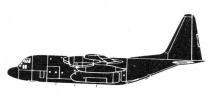Incident Overview

Description
The Swearingen Metro III, operating NFD flight 108, was destroyed when it impacted terrain near Kettwig, Germany, following a lightning strike. All 21 on board were killed. Scheduled departure time from Hannover Airport, Germany was 07:00 hours. However, due to snow fall during the night, the flight crew decided to de-ice the airplane prior to departure. The flight took off at 07:15 hours, bound for Dsseldorf. The climb to FL140 was uneventful. Just prior to descent the flight crew noticed a thunderstorm conditions in the area. Descent was commenced at 07:39. Eight minutes later the aircraft was cleared down to 3000 feet, and the controller reported that flight 108 was number three on approach. At 07:49 the controller warned no. 2 on approach that a previous aircraft had reported a lightning strike on final approach. He offered to vector the flight around the area. The offer was declined. At 07:50 the controller warned flight 108 as well: “Flamingo 108 the same information for you, the preceding landing experienced a lightning strike on about 6 miles final”. The crew answered: “we copied and are looking outside”. At 07:50:50 NFD flight 108 captured the localizer at an altitude of 2900 ft. The crew saw on the weather radar that the area with the thunderstorm activity was right in front of them. At 07:54:25 flight 108 flew into the thunderstorm. The first officer pointed out to the pilot in command, who was flying, that they were to the left of the approach course and asked him to turn to the right. The pilot in command replied that he did not necessarily want to fly “in there”, but he changed course to return to the centreline. The flight crew then switched to the Dsseldorf Tower controller. There was no more contact with the flight. The aircraft entered s steep descent. Eyewitnesses on the ground saw the aircraft descending through the clouds and then pull up again, disappearing into the clouds. The aircraft became uncontrollable and broke up in flight. PROBABLE CAUSES: (translated from German) The commission of inquiry concludes that the accident was caused due to the fact that – The flight crew had continued into an area in which the occurrence of electrical discharge was to be expected, although avoiding the area would have been possible, – The total electricity supply failed due to a lightning strike in significant instrument flight conditions, causing the failure of the cockpit- and instrument lighting and making it impossible to use the flaps and stabilizer trim, – The plane had entered a largely uncontrolled flight after the power failure, – The aircraft became overloaded during the uncontrolled flight aircraft during and disintegrated. Contributing to the causes was the fact that – The crew did not agree on the flight path in the area of the thunderstorm, – The crew were not prepared for a lightning strike, – The crew possibly became physically and mentally impaired for a short time after the lightning strike, – The crew could not understand each other for a short time after a short power failure because they wore headsets, – When the lightning struck, the plane was in an unstabilized flight condition with nose trimmed down and flaps half way down, – The crew was not able to restore power, probably because of the damage in the electrical wiring, – The crew did not have sufficient means for orientation in order to transfer the plane back from a predominantly uncontrolled flight to controlled flight.
Primary Cause
Electrical failure due to a lightning strike, leading to a loss of control and subsequent breakup of the aircraft.Electrical failure due to a lightning strike, leading to a loss of control and subsequent breakup of the aircraft.Share on:





